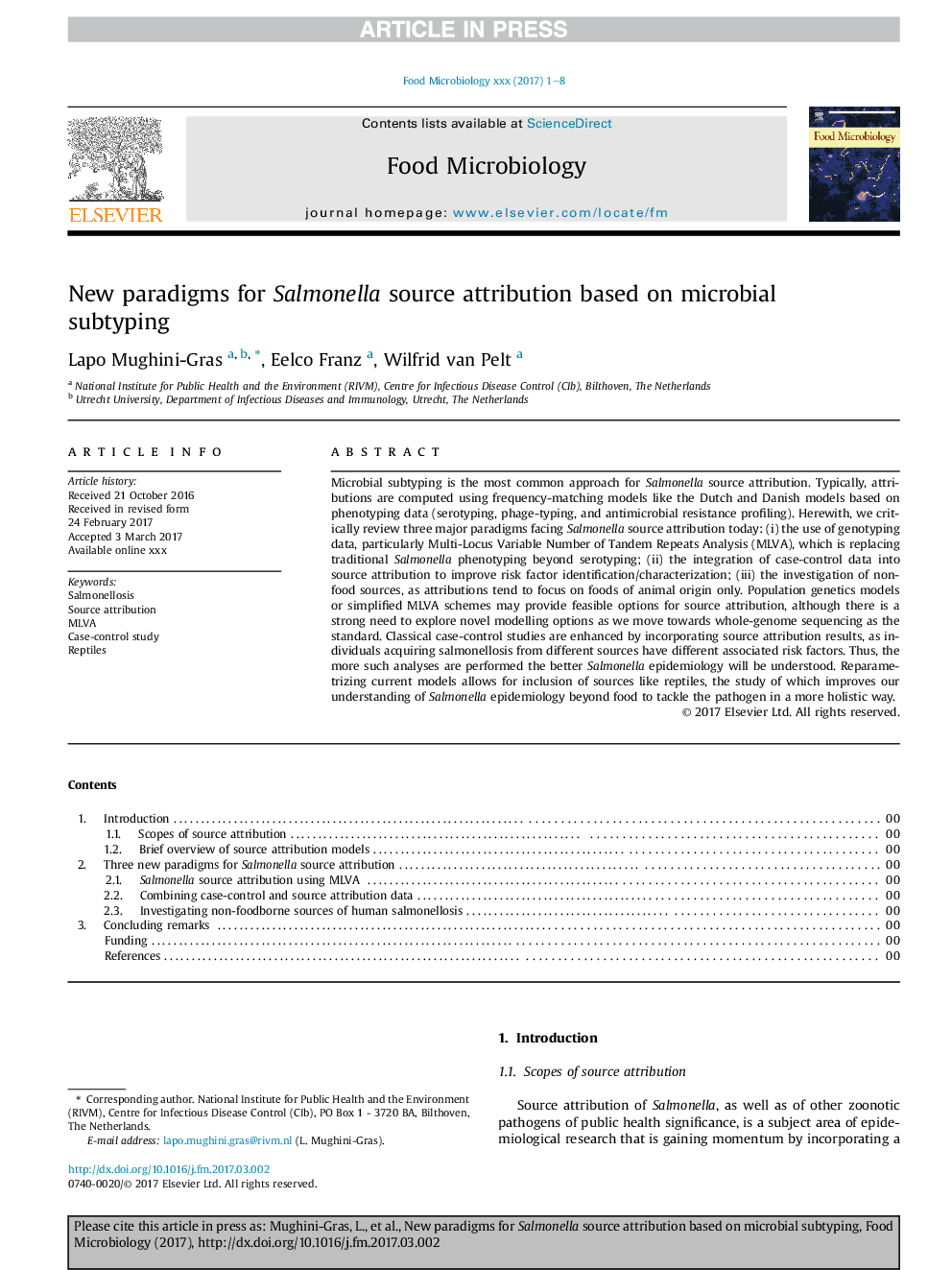| کد مقاله | کد نشریه | سال انتشار | مقاله انگلیسی | نسخه تمام متن |
|---|---|---|---|---|
| 8843601 | 1616230 | 2018 | 8 صفحه PDF | دانلود رایگان |
عنوان انگلیسی مقاله ISI
New paradigms for Salmonella source attribution based on microbial subtyping
ترجمه فارسی عنوان
پارادایم جدید برای ارجاع منبع سالمونلا مبتنی بر زیرتایپ های میکروبی است
دانلود مقاله + سفارش ترجمه
دانلود مقاله ISI انگلیسی
رایگان برای ایرانیان
کلمات کلیدی
موضوعات مرتبط
علوم زیستی و بیوفناوری
علوم کشاورزی و بیولوژیک
دانش تغذیه
چکیده انگلیسی
Microbial subtyping is the most common approach for Salmonella source attribution. Typically, attributions are computed using frequency-matching models like the Dutch and Danish models based on phenotyping data (serotyping, phage-typing, and antimicrobial resistance profiling). Herewith, we critically review three major paradigms facing Salmonella source attribution today: (i) the use of genotyping data, particularly Multi-Locus Variable Number of Tandem Repeats Analysis (MLVA), which is replacing traditional Salmonella phenotyping beyond serotyping; (ii) the integration of case-control data into source attribution to improve risk factor identification/characterization; (iii) the investigation of non-food sources, as attributions tend to focus on foods of animal origin only. Population genetics models or simplified MLVA schemes may provide feasible options for source attribution, although there is a strong need to explore novel modelling options as we move towards whole-genome sequencing as the standard. Classical case-control studies are enhanced by incorporating source attribution results, as individuals acquiring salmonellosis from different sources have different associated risk factors. Thus, the more such analyses are performed the better Salmonella epidemiology will be understood. Reparametrizing current models allows for inclusion of sources like reptiles, the study of which improves our understanding of Salmonella epidemiology beyond food to tackle the pathogen in a more holistic way.
ناشر
Database: Elsevier - ScienceDirect (ساینس دایرکت)
Journal: Food Microbiology - Volume 71, May 2018, Pages 60-67
Journal: Food Microbiology - Volume 71, May 2018, Pages 60-67
نویسندگان
Lapo Mughini-Gras, Eelco Franz, Wilfrid van Pelt,
